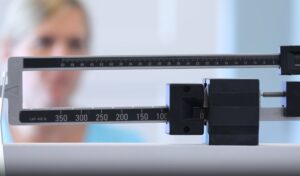In the pursuit of an hourglass figure, many seek to achieve a smaller waist and bigger hips. This highly coveted body shape symbolizes femininity and attractiveness for many.
Yet, attaining it isn’t solely about aesthetics; it’s about embracing a healthier lifestyle that combines nutrition, exercise, and well-being.
In this comprehensive guide, we’ll explore practical, achievable methods to help you on your achieve this goal.
Nutrition: Fuel for Change

A balanced diet is the cornerstone of any fitness journey, playing a vital role in losing fat and building muscle in targeted areas. It’s not just about what you eat, but also how you eat.
Eating smaller, more frequent meals can boost metabolism and help maintain a steady energy level throughout the day.
Including a variety of food groups ensures a wide range of essential nutrients, supporting overall health and fitness goals.
Caloric Deficit for Fat Loss
To slim down your waist, a caloric deficit is necessary where you burn more calories than you consume, leading to fat loss. It’s important to approach this deficit mindfully; rapid weight loss can be unsustainable and unhealthy.
Gradual weight loss, about 1-2 pounds per week, is more effective for long-term results. Keeping a food diary or using a calorie-tracking app can be helpful tools in managing your calorie intake.
Nutrient-Dense Foods
Emphasizing whole, unprocessed foods like fruits, vegetables, lean proteins, and whole grains provides essential nutrients and helps in keeping you satiated for longer durations.
These foods are not only rich in vitamins and minerals but also high in fiber, which is crucial for digestive health and maintaining a feeling of fullness.
Including healthy fats from sources like avocados, nuts, and olive oil is also important for hormonal balance and overall health.
Strategic Eating for Hip Growth
To enhance hip size, it’s essential to nourish the muscles, primarily the glutes, with a protein-rich diet that supports muscle building and repair.
Alongside protein, it’s important to include carbohydrates for energy and healthy fats for hormone production, both of which are crucial for muscle growth.
Complex carbohydrates like sweet potatoes and brown rice are excellent for sustained energy, essential for intense workouts targeting hip growth.
Importance of Hydration
Staying well-hydrated is critical for overall health and especially important in fitness routines. Water not only aids in digestion and nutrient absorption but also helps in regulating body temperature during workouts.
Additionally, drinking enough water can help in reducing bloating, giving a more defined appearance to your waistline. It’s advisable to drink water consistently throughout the day, not just during meals or workouts.
Exercise: Sculpting Your Body

Exercise is indispensable for reshaping your body. Combining strength training with cardio yields the best results in changing body composition.
While cardio helps in reducing fat, strength training is essential for building muscle and improving overall body strength. Consistency in your exercise routine is key to seeing results over time.
Cardio for Fat Loss
Cardio exercises like running, cycling, and swimming are effective in burning calories and reducing fat, particularly around the waist.
While cardio is essential, balancing it with strength training ensures that you’re not just losing weight but also toning your body. Overdoing cardio can sometimes lead to muscle loss, so it’s important to find a balance that works for your body.
Strength Training for Muscle Growth
Strength training, particularly exercises that target the glutes and hips like squats, lunges, and hip thrusts, is crucial for muscle growth. Incorporating weights into these exercises intensifies the workout and accelerates muscle growth.
It’s important to progressively increase the weights or resistance to continually challenge the muscles, which leads to further growth and strengthening.
Core Workouts
Core workouts are fundamental for achieving a smaller waist. Exercises like planks, Russian twists, and bicycle crunches not only strengthen the core but also improve posture and balance, which are vital for performing other exercises effectively.
A strong core also reduces the risk of injuries and can improve the efficiency of your workouts, making them more productive.
Lifestyle Changes

Your daily habits significantly impact your fitness journey. The choices you make every day can either propel you towards your goals or set you back.
Sleep and Recovery
Adequate sleep is essential for muscle recovery and hormonal balance, which aids in fat loss and muscle growth. During sleep, your body repairs itself, allowing muscles to grow stronger.
Lack of sleep can lead to increased levels of cortisol, a stress hormone that can hinder weight loss. Moreover, well-rested individuals tend to have better control over their appetite, reducing the likelihood of overeating.
Therefore, aim for 7-9 hours of quality sleep each night to ensure your body gets the rest it needs to support your fitness goals.
Stress Management
High stress levels can lead to weight gain, particularly around the waist. Practice stress-reducing techniques like meditation or yoga.
Incorporating these practices into your daily routine can significantly lower cortisol levels, minimizing the risk of stress-induced weight gain.
Additionally, engaging in activities you enjoy, like reading or spending time outdoors, can also effectively reduce stress.
Remember, mental health is just as important as physical health in your fitness journey, so make stress management a priority for overall well-being.
FAQs
Can I target fat loss specifically in my waist area?
No, spot reduction of fat is a common misconception. Fat loss occurs evenly throughout the body based on genetics and overall body fat percentage.
However, a combination of overall weight loss and core strengthening exercises can help in reducing waist size.
How often should I train my glutes to increase hip size?
For muscle growth, aim for glute-focused exercises 2-3 times a week. This allows for adequate recovery time, which is essential for muscle growth. Ensure your routine includes a variety of exercises to target different parts of your glutes.
Is it necessary to use weights for glute exercises?
While bodyweight exercises can be effective, adding weights can significantly enhance muscle growth in the hips. Start with lighter weights and gradually increase as you gain strength to avoid injury.
Are there any specific foods that can help in achieving a smaller waist?
No specific food can directly lead to a smaller waist, but a diet rich in fiber, protein, and healthy fats can help in overall fat loss and muscle building. Foods like leafy greens, lean meats, and nuts are excellent choices.
How long does it typically take to see results in waist reduction and hip enlargement?
Results vary depending on individual factors like diet, exercise intensity, and genetics. Typically, noticeable changes can be seen within 3-6 months of consistent effort in both diet and exercise.
Can supplements help in achieving a smaller waist and bigger hips?
There’s no magic pill for changing body shape. Supplements may support overall health and performance but should not replace a balanced diet and exercise. Always consult a healthcare professional before starting any supplement regimen.
Summary
In summary, getting a smaller waist and bigger hips involves a combination of proper diet, regular exercise, and healthy lifestyle habits.
Focus on eating nutritious foods, doing strength training and cardio exercises, and ensuring enough sleep and stress management.
Consistency and patience are key. It takes time and dedication to see changes, but with persistent effort, you can achieve your goals.













